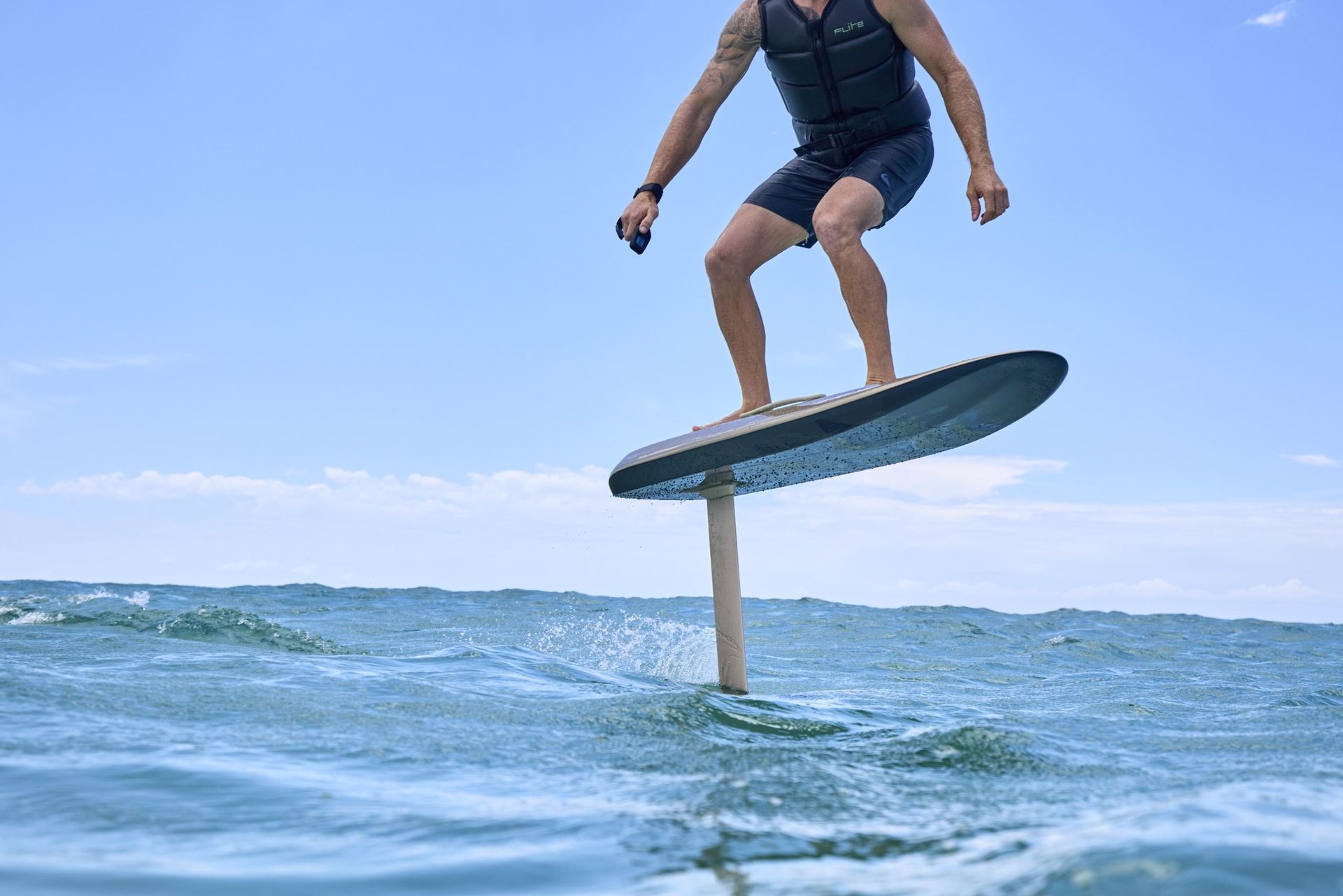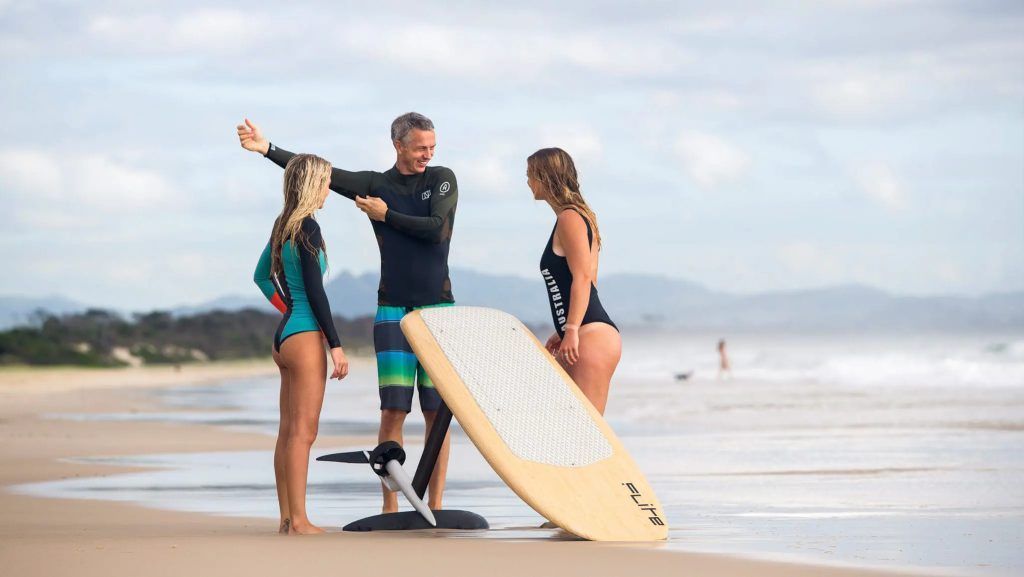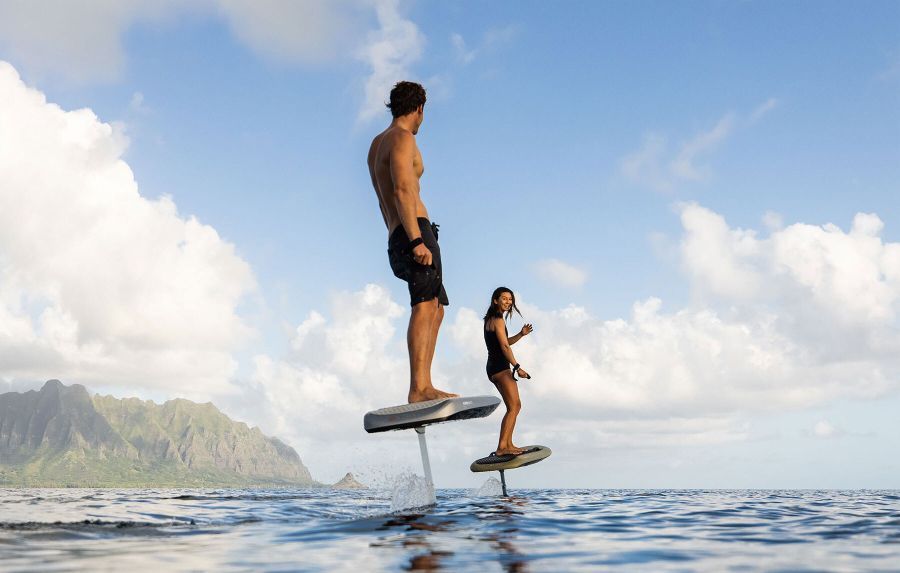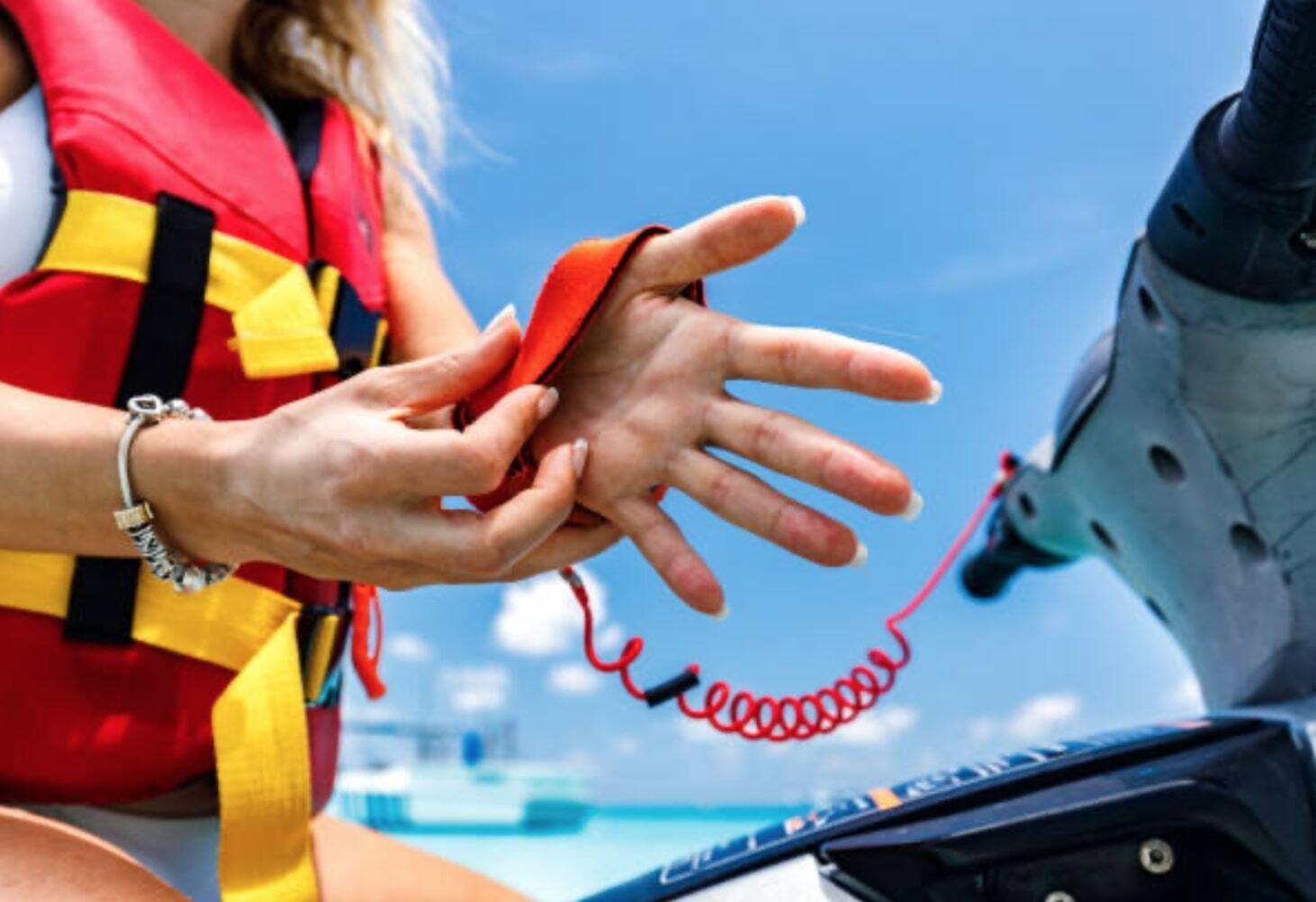If you are a die-hard fan of water sports, you are surely familiar with the Fliteboard. The ability to glide on water and feel like you are flying over it is what electric foil boards offer.
In this article, I will explain the term Fliteboard in more detail and how to practice this water activity safely.
Defining the term fliteboard

In reality, Fliteboard is a brand of eFoil, a type of electric surfboard that flies above the water. The brand is so well-known that it is often used to refer to any eFoil.
This water sport, which is currently very popular, originated in 2009 in Hawaii. A famous surfer, Laird Hamilton, came up with the idea of placing a foil under his surfboard in hopes that it would “fly” above the water, and it worked! Since then, many models based on this concept have been created.
A Fliteboard is thus a surfboard equipped with a front wing, a rear wing, a mast, a motor, a fuselage, and a propeller. This entire system allows it to fly above the water at speeds of up to 40 km/h, with a flight height ranging from 20 to 75 cm. All this is achieved without pollution and without noise.
How to practice Fliteboarding?

This water activity cannot be learned overnight. There are safety and practice concepts you need to understand to ensure that your electric surfing sessions go smoothly and that you can fully enjoy them.
Safety First
The first thing to do before practicing Fliteboarding is to check that the cables are properly connected and placed inside the board. This is extremely important because, as you know, water and electricity do not mix well. You risk electrocution if a wire comes into contact with water.
Similarly, do not turn on the foil during practice and do not open it while you are on the water. Of course, the battery should only be changed on dry land…
Choosing the Location
Whether on the sea or a lake, you must have enough space to practice electric surfing without endangering others or yourself. Therefore, you need to go beyond the swimming area, which is 300 meters from the shore, and maintain a minimum distance of 100 meters from swimmers and other water sports enthusiasts! Also, be careful not to collide with obstacles such as rocks, objects, sandbars… At 40 km/h, this can be dangerous. At Custom Motors, our team will be there to point out the places to avoid and those to favor!
Pure Practice

First of all, it is important to familiarize yourself with the eFoil. Initially, you should start by lying on the board and moving it forward at a slow speed. As you become more comfortable, you can try kneeling and maintaining good balance, still at a slow speed. Once you feel confident and the Fliteboard is stabilized, you can try accelerating and standing up. This is when you will experience the best sensations.
How to Improve?

One of the areas to improve is foot positioning. Initially, the first instinct is to stand in the middle of the board with feet spread apart. The ideal placement is to put one foot at the back of the surfboard and the other in the center. You should also position yourself diagonally, with both feet oriented along the same axis.
With this positioning, you will have better control over the eFoil! However, keep in mind that mastering any water activity takes time and practice.
Have you given in to the craze for Water Toys? Then you must certainly know the Fliteboard! This type of electric surfboard that hovers above the water offers incredible sensations: it simply feels like you’re flying over the ocean! However, to ensure that your Fliteboard lets you glide for as long as possible, it’s important to maintain it and its spare parts. In this article, we will remind you of some general information about the eFoil and provide you with maintenance tips.









CONTATEZ NOUS:
Contact Us
Merci de nous contacter.
Nous vous répondrons dès que possible.
Une erreur est survenue lors de l'envoi de votre message.
Veuillez réessayer plus tard.
Emplacement CUSTOM MOTORS
- www.efoilshop.fr - Tous droits réservés - Mentions légales - Réalisé par Neris


